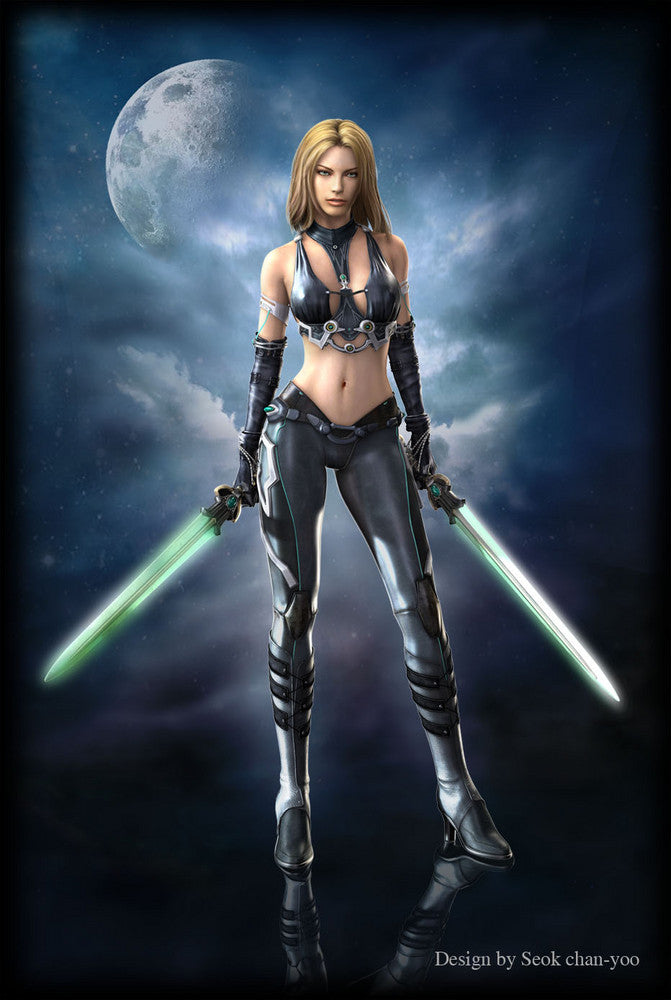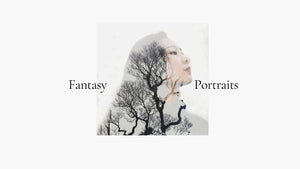How to Handle Backgrounds in Fantasy Portraits
Originally Published June 2009
When you’re getting started on a fantasy portrait, you may find yourself wondering what to do with the background. For example, say you’re painting a fairy portrait of a young woman. You’ve decided to give her fairy wings and some kind of fairy outfit. But what’s the setting? To help you answer that, first make sure you are painting a portrait, and not a figure in a landscape. To understand the difference, take a look at the following two images. The one on the left is a figure in a landscape, and the one on the right is a portrait.
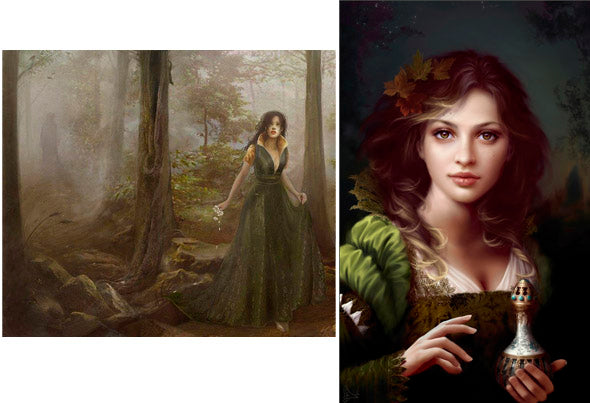
A figure in a landscape is just that: a landscape painting that happens to have one or more people in it. A portrait is a painting of an individual person (although the person may be completely made up). In the fantasy realm, when we paint a figure in a landscape, we’re almost always telling a story. This is, by definition, an illustration: it illustrates the action of a story. A fantasy portrait, on the other hand, concentrates on one person’s likeness. The viewer feels they are looking at an actual person. What that person is doing, if anything, is secondary.
This distinction is important to make when you’re beginning a fantasy painting. If you’re doing an illustration, the figure and the background are equally important. A portrait, however, is about the person, and the background serves to enhance the portrait. So if you’re setting out to paint a portrait, you might not want to include lots of distracting stuff in the background. If you throw in a dragon, a castle, some impending bad weather, and special effects, you’re no longer painting a portrait: it’s a figure in a landscape. Nothing wrong with that, but just be sure that’s the direction you want to go.
For our purposes, we’re going to stick with fantasy portraits. We’re going to take a look at some examples of fantasy portraits, and how they treat the background. Notice, as we go through our tour, that the background always stays, er, in the background. If a portrait was a piece of jewelry, the background would be the setting. It’s only purpose is to show off the jewel to best advantage. With that in mind, let’s begin.
Imagine you’ve been commissioned to paint a fantasy portrait based on the following photograph.
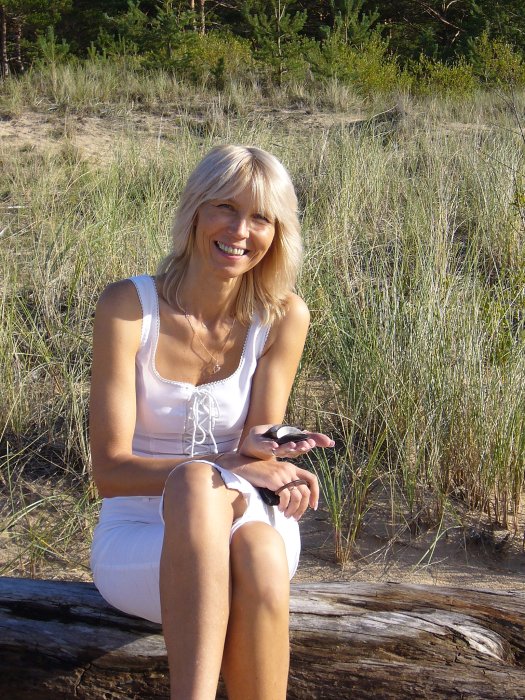
Since this is a portrait and not an illustration, your painting should focus on the woman. Artist Liiga Smilshkalne created a beautiful portrait with a fantasy touch, by changing the color scheme to a strong yellow. The portrait has a wonderful glow to it. The shells in her hand were replaced by a flower, and her clothes were completely reimagined, but in a subtle, complementary way. The background here is little more than gradations of color. There is just the suggestion of foliage and a few butterflies.

In this next portrait (Europa, a 3D rendering by Soa Lee), the background is also very simple. The clouds are subdued and dark, which contrasts with the subject’s fair skin and hair. The clouds supply (pardon the pun) atmosphere to the portrait, giving it a classical feeling, appropriate to the portrait of a goddess.

In her portrait of an angel, Marta Dahlig has provided her subject with a very simple, yet effective, setting. The details (rock pedestal, doves) are just enough to establish a sense of place. Mostly, the background is just pure color, which complements the coloring of the angel. It’s a setting for the jewel.
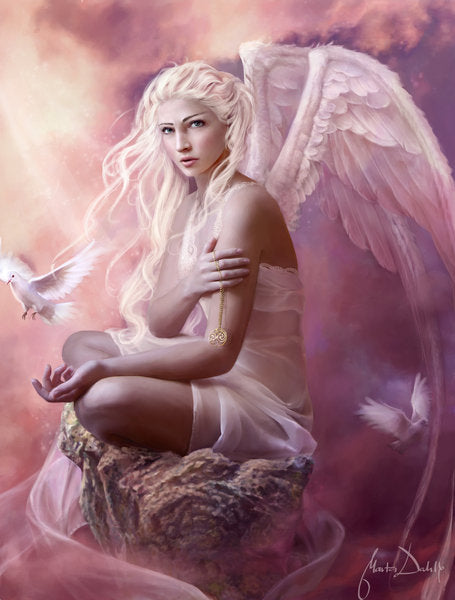
For fantasy portraits, it’s actually helpful if the background is vague and undefined. After all, it’s a depiction of the Faery realm, and reality is not so solid there. The following painting (Changing, by Benita Winckler) is a good example of this. If the details were more sharply defined, it would take it out of the realm of Faery, and into something else (horror, perhaps).
Of course, rules are made to be broken, and so next we have a portrait with some quite well-defined details. This is a portrait that also happens to be telling a story. The details are important for that reason. But they don’t distract from the main figure. They tell us about her.
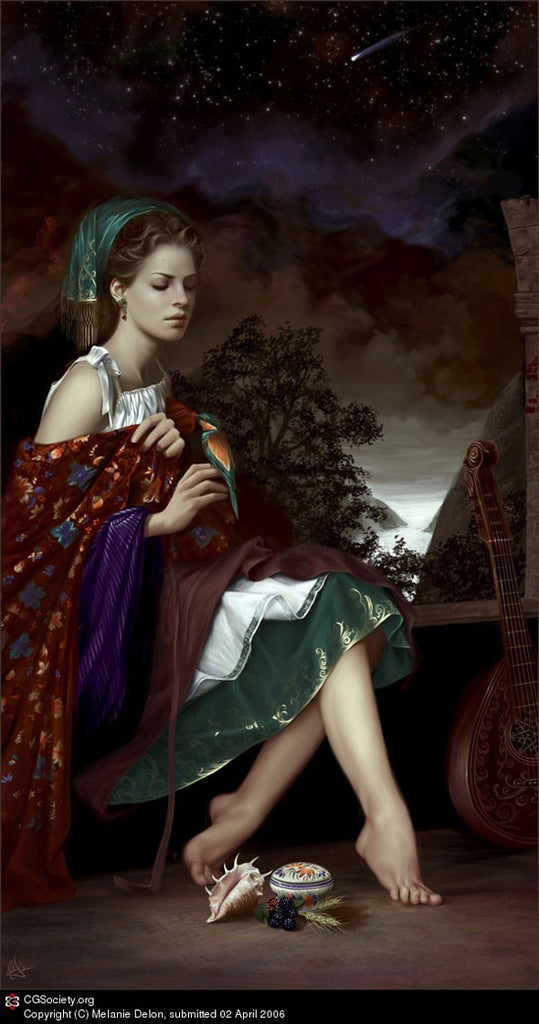
In this next example, the portrait and the background seem to merge. Notice the use of a limited palette here — mostly greens and greys. The greens in the fleshtones add to the sense that she is part of the landscape.
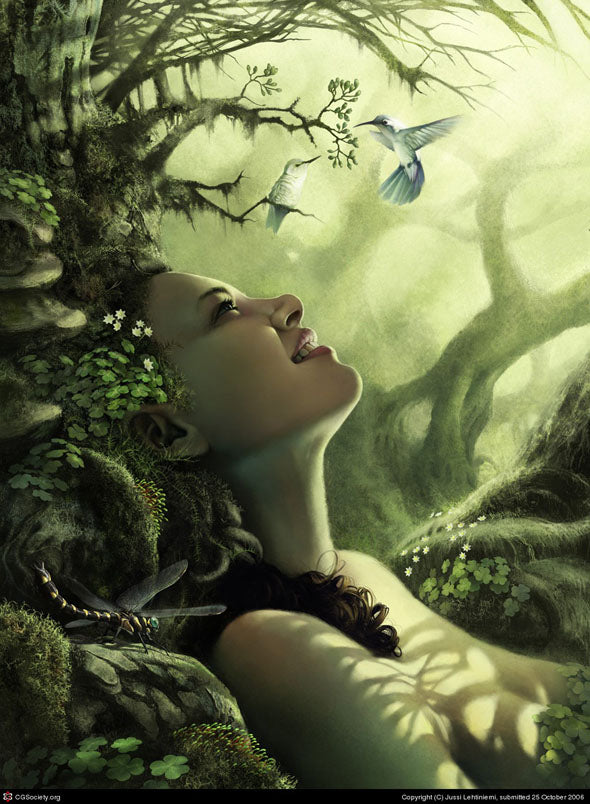
In this last piece, by Seok Chan-Yoo, notice that the background is, as before, more suggestion than anything. This isn’t a recording of a person standing in a particular place. Rather, it’s a portrait that transcends time and space, as all good fantasy portraits do. The background helps us understand the character. In this case, the portrait is of an iconic superhero type.
